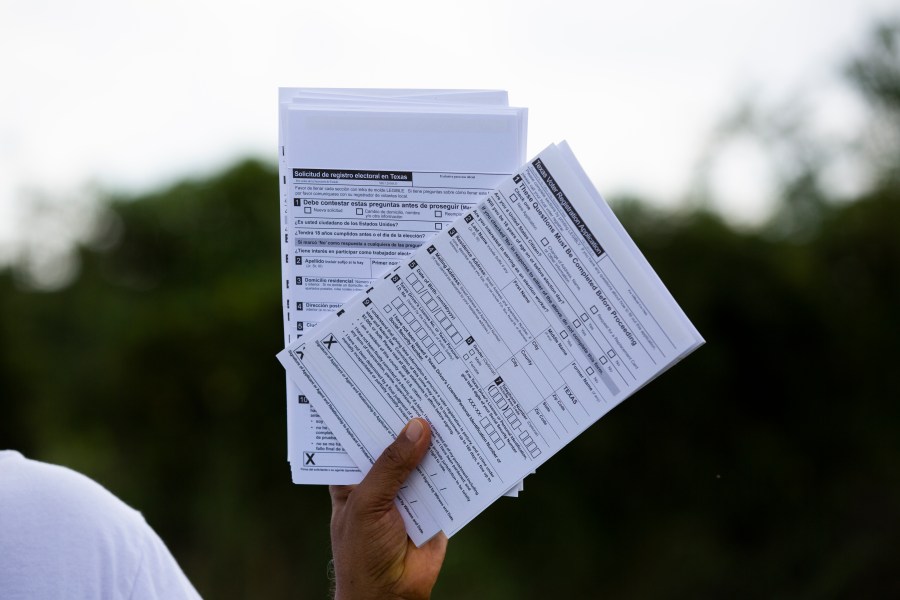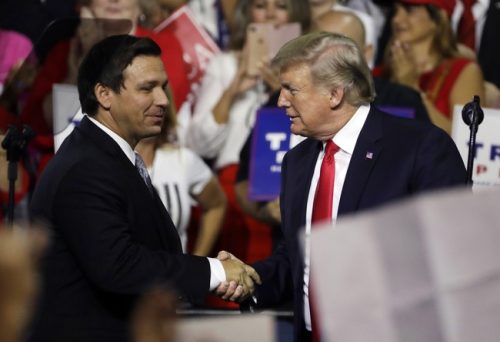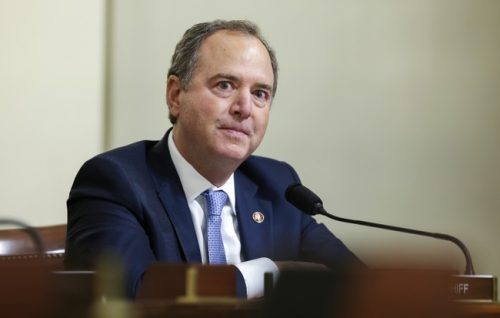
How has the number of registered voters changed in Texas in recent years?
AUSTIN (KXAN) — Texas is consistently one of the fastest-growing states in the country. Population estimates released by the U.S. Census Bureau in December show the state was home to more than 30.5 million people as of July 2023.
As the population grows, so too does the number of registered voters. According to the Texas Secretary of State, almost 17.9 million Texans are registered to vote as of January 2024.
We’re keeping track of voter registration statistics across the state. Follow along with our interactive charts and maps below.
How has voter registration changed over time?
Since 2000, Texas’ population has increased by 45.6%, from around 21 million to around 30.5 million. During that same time frame, the number of registered voters has increased from 11.4 million to almost 17.9 million — an increase of 56.8%.
Where has voter registration changed the most?
Just over the past four years, the state has added 1,783,547 people to the voter rolls, an 11% increase. The change has not been uniform across Texas. While 184 counties have seen an increase in the number of registered voters since January 2000, 70 counties have seen a decrease.
The most drastic increases have primarily occurred in suburban counties, with Kaufman County leading the way. The county, just southeast of Dallas, has seen a 33% increase in the number of registered voters. Kaufman is also the fastest-growing county in the state, based on 2022 population estimates from the U.S. Census Bureau.
On the other hand, rural McMullen County, south of San Antonio, has lost 11.75% of its registered voters over the past four years, more than any other county.
Use our interactive map below to see voter registration changes in your county:
Harris County, home to Houston, added more voters than any other county — an increase of more than 230,000 over the past four years. Collin, Tarrant, Bexar and Denton counties each added more than 100,000 people to their voter rolls.
Wichita County, home to Wichita Falls, had the largest decrease in the number of registered voters, losing 3,502 voters since January 2000. Jefferson and Willacy counties each lost more than 1,000 voters.
Which counties have the most registered voters?
Unsurprisingly, the most populous county in the state also has the most registered voters. Harris County has more than 2.6 million registered voters as of January 2024. Dallas, Tarrant and Bexar counties have more than 1 million registered voters each.
How many people are registered to vote in Central Texas?
In the 15 counties that make up the KXAN viewing area, more than 209,000 people registered to vote between January 2020 and January 2024, a 13.8% increase.
Of those, 74,411 were in Williamson County, while just under 74,000 were in Travis County. More than 32,000 newly registered voters live in Hays County. Bastrop and Burnet counties each added more than 5,000 new voters to their rolls.
Hays County had the largest percentage increase in voter registration, up 23% compared to January 2020. Blanco, Williamson and Bastrop counties each saw increases of more than 20%, while the number of registered voters increased by more than 10% in Burnet, Llano, Lampasas, Milam and Lee counties.
Just two local counties saw increases of less than 7%. Caldwell County increased its number of registered voters by 2.7%, while San Saba County increased by 2.2% over the past four years.
How could voter registration changes impact election results?
Texas, while still a red state, has shifted notably to the left in recent cycles. Donald Trump won the state by more than 800,000 votes in 2016, a margin of 9%. That margin dropped to just over 630,000 in 2020, or 5.6%.
Similarly, Gov. Greg Abbott won the 2018 election with a margin of more than 1.1 million, or 13.3%. That dropped to less than 900,000 in 2022, or 10.9%. It should be noted that turnout is typically much higher in presidential elections.
So what impact is population change having? We’ve divided the state into five political regions:
Major Metros (Bexar, Dallas, Harris, Tarrant and Travis counties)
Smaller Cities (places like Amarillo, Corpus Christi, Lubbock and Tyler)
Suburban Counties (such as Collin, Denton, Fort Bend, Hays and Williamson counties)
Border Region (including Brownsville, El Paso and Laredo)
Rural Counties
The major metros region has the most registered voters, with more than 7.4 million as of January 2024. Rural counties account for about half of that number, and suburban counties are poised to overtake rural counties as the second-largest group, thanks to recent population growth.
Here’s how each of those regions voted in the past several election cycles.
Population growth has contributed to significantly higher vote totals. In 2016, just under 9 million votes were cast statewide in the presidential election. That figure ballooned to more than 11.3 million in 2022.
Suburban counties in particular are leading the charge. In the 2020 election, Texans as a whole cast 26% more ballots than in 2016. In suburban counties specifically, that figure was 37%.
The same trend is seen when comparing the 2018 and 2022 gubernatorial elections. Turnout was actually higher in 2018, by about 240,000 votes, or 2.9% statewide. But suburban counties cast 5.5% more ballots in 2022 than in 2018, contradicting that statewide trend.
There are also interesting changes in the margins of victory within our county categories. Generally speaking, large cities are getting bluer while rural Texas gets redder.
Rural counties netted Trump about 982,000 votes in 2016, but more than 1.1 million in 2020. For Democrats, the margin in the major metros increased from about 560,000 in 2016 to 925,000 in 2020.
Really driving the tightening statewide margin though is significant change in the suburban counties category. Those 11 counties gave Trump a margin of almost 360,000 in 2016, but that dropped to about 260,000 four years later.
[#item_full_content]

